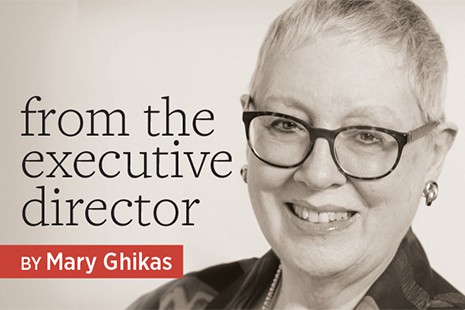
Happy new year! The American Library Association’s (ALA) fiscal year begins every September 1, overlapping several other “new years”: the governance year, which begins at the conclusion of Annual Conference; the calendar year; and, of course, your personal membership year. So why is a new fiscal year so significant?
As in our personal lives, a new year is a time for reflection. We look back at the surprises, successes, and disappointments. We look at how we performed inside the Association—and, even more important, at our impact on libraries, on the people who make both the Association and libraries work, and on all the communities served by libraries. We look at how we use resources to further our mission and strategic directions—and to support our members in the work they do.
In June, we explored questions about the work of change going on at ALA, with impacts on the present and future life of the Association. We thought about the values of persistence; conversation and context; difference and discovery; and engagement. These aspects of association life are important because they help us fulfill our mission and key action areas:
- provide collective leadership for the development, promotion, and continuous improvement of libraries of all types in all communities
- develop and nurture a diverse body of library workers, trustees, Friends, and advocates who make up the living heart of libraries and tie libraries to communities
- lead the fight for equitable access to information and for enhanced learning for everyone, at every age, with every ability
To help achieve this, ALA’s leadership defined four strategic directions, or areas of focus: advocacy; information policy; professional and leadership development; and equity, diversity, and inclusion. These, along with other framework policies—such as the Core Values of Librarianship and the Library Bill of Rights—define where we want to go and what we want to be. They are the “why” for ALA’s use of resources: commitment, time, organizational structure, procedures, ideas, and, of course, dollars.
Collectively, these represent an organizational touchstone as we go about the challenging and necessary work of organizational change. They also represent a yardstick by which to measure effective use of all types of resources.
- Are we having an impact?
- How could we accomplish our mission more effectively?
- Are we focusing where we ought to?
- Are we measuring the right things?
- Will the work of change—for staff and members—move us closer to achieving our mission?
- Are we creating new capabilities—and possibilities?
Each of us brings unique perspectives and questions to this reflection.
In FY2020, we enter the second year of a three-year investment cycle approved by the ALA Executive Board. These investments have been designed to help develop new resources and capabilities to address ALA’s mission and goals. The ALA Budget Analysis and Review Committee (BARC), led by former chair and current ALA Treasurer Maggie Farrell and former treasurer Susan Hildreth, undertook the task of reviewing metrics. This will continue in FY2020 with Peter Hepburn as BARC chair and Farrell as treasurer.
This is a collective journey toward a shared mission. As we begin the new fiscal year, it is critical that we ask important, sometimes difficult questions and seek answers together—respectful of one another and our past contributions, and focused on future destinations.

